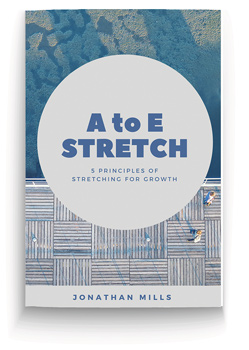Removing clutter is liberating – getting rid of the unnecessary and creating space to think and focus on the truly important. Yes, removing junk takes time, but it does eventually pay dividends with clean desks, open spaces and a more conducive living or working environment. Creeping clutter is more difficult to tackle – this type comprises the unfinished projects or that which we still need to get to. Some effort and perhaps a ruthless approach are needed to tie up all the loose ends and clear the space.
Organisations, too, have clutter – bureaucratic processes, unnecessary reports, internal politics, poorly used communication channels, micro-management, messy or vague leadership, unclear direction and so on. This “clutter” holds the organisation back from achieving its best and frustrates the employees and managers alike. A new leadership approach is necessary to clean the dirt and wipe away the cobwebs if a motivated workforce is to be achieved.
Leadership minimalism has been defined by Jon Mertz as: “A practice that helps leaders focus on what adds the most value to the people within their community of influence. By acting and speaking with clarity on what matters most, leaders create space for others to contribute creatively and productively to the health of the organisation”. Minimalist leaders create space for employees to grow and, with this progress, greater contributions are made towards fulfilling mission-critical activities. Creating space means clearing several things, including:
- Removing any obstacles that may prevent employees doing their best work for the team and the organisation
- Eliminating political clutter that confuses loyalties and breaks down trust, thus preventing employees from using their respective talents more fully
- Eradicating conflicting messages and bringing clarity to direction – this aids focus
- Leadership behaviour that does not align to the company values
- Reducing the desire to control
Activating leadership minimalism requires the leader to focus on the following actions:
- Values adoption – belief in and practising of the company and personal values exhibit the core expected behaviours that lead to the development of the desired company culture. The leader believes in the abilities, talents and skills of all employees and extends trust in this respect.
- Exercising emotional intelligence and evaluating data – not only collecting data in traditional ways (like surveys, etc.), but using the abilities of observation and listening to understand the environment. Once data is absorbed and evaluated, this should translate into actionable steps – employees need to see the leader acting on pressing issues within the company.
- Growing relationships and collaboration – repairing any dysfunctional relationships, tearing down silos and encouraging inter-team collaboration. As this grows and becomes common practice within the company, the leader will be able to sense when to step in or step away.
- Improvement – taking learning to the next step of applied knowledge (actually making decisions and implementing changes that have positive impact). Mertz notes: “Value is created by improving why, what, how and when we act”. It does not imply that the leader has to find the solutions or improvements, but rather suggests that the leader facilitates the solutions through the innovativeness and creativity of employees.
Leadership minimalism ignites and empowers others – its influence permeates the company culture and employees start feeling valued, take responsibility for their time and energy and put themselves into a position of accountability to their fellow team members. Clarity, momentum and impact are aligned.










